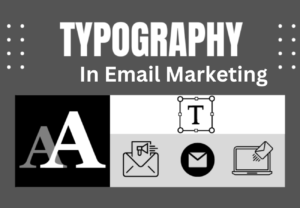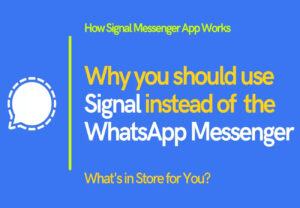This custom blog powered by our Web Tech Experts offers vital brand style guidelines for formal use and other tips—suitable for beginners in content design and professional webmasters. As such, these business rules and tools are some of which our official business website and application platforms utilize to help determine the critical design choices and inform the brand style features.
In today’s crowded and competitive business marketplaces, it’s more important than ever for businesses to consider a few brand style guidelines and establish a unique brand identity. On the one hand, a powerful brand voice can help you catch people’s attention, earn their trust, and make your brand unforgettable. A good brand needs a solid personality to endure and stay relevant to its users.
On the other hand, a powerful brand voice ensures that your presence is felt, helps you convey your message clearly and effectively, and builds trust with your audience. Your brand voice should resonate with your target audience, be consistent across all channels, and reinforce your brand’s values and beliefs. Developing strong brand recognition and trust with your audience matters a lot.
For one thing, it leads to increased customer loyalty and sales. Think of your brand voice as your brand’s unique personality and tone of voice consistently applied across all communication channels. It includes the language and words used, the emotions a brand conveys with its content, and the image and personality it portrays in its marketing efforts. Now, let’s dig deeper and learn more.
Understanding How Brand Style Guidelines Help Optimize Business Awareness
Brand Style Guidelines are the rules and tools used to determine your business’s critical design choices and inform the brand style guide. Business covers, cards, logos, fonts, colors, visuals, voice and tone, and other elements often make up a brand identity. Style guides can even include a brand’s story, philosophy, inspiration, and positioning statement. Every brand style guide is unique, yes!
But they all serve to help employees maintain brand consistency. On that note, without well-defined guidelines, your employed design elements and marketing materials will likely end up all over the place, lacking cohesion and consistency. Designers, writers, and anyone else involved in the external promotion of your company use brand guidelines to ensure they’re creating effective assets.
It also helps them to creatively craft content that is unified in style and feel, ensuring everyone is on the same page. When a brand guide goes into so much trouble to show off what it is and how it should be represented, marketers find it easier to capture its essence in marketing and when creating content. But what is the difference between a brand voice and a business tone in marketing?
Your brand voice is the unique personality and tone consistently applied across all communication channels. It represents your company’s character and values. On the other hand, your tone is the emotional inflection added to your voice, which adjusts according to the message being conveyed. Be that as it may, the most notable brand style guides help answer various FAQ questions.
Such questions include:
- What font does your logo use?
- What colors are approved?
- When you need an image for a project, what tone and feel should it have?
- Should writers use “email,” or does your organization prefer the hyphenated “e-mail?”
- What is your stance on the Oxford Comma debate?
Of course, some of the questions mentioned above may seem like minor details. However, if they are not effectively captured in a brand style guide, your beautiful brand can quickly drift into an inconsistent customer and employee experience. Consistency is critical to crafting a sustainable brand identity; your brand style guidelines can significantly maintain that consistency.
Who Benefits From Any Given Customized Business Brand Style Guidelines?
In today’s crowded and competitive market, it’s more important than ever for businesses to establish a unique brand identity. A powerful brand voice can help you catch people’s attention, earn their trust, and make your brand unforgettable. On that note, think of your brand voice as your brand’s unique personality and tone of voice consistently applied across all communication channels.
It includes the language and words used, the emotions a brand conveys with its content, and the image and personality it portrays in its marketing efforts. A good brand needs a solid character to endure and stay relevant to its audience. A powerful brand voice ensures that your presence is felt, helps you convey your message clearly and effectively, and builds trust with your audience.
At the same time, messages addressing social issues might have a more severe and formal tone to appeal to potential business customers and target audiences. Remember, even if you have many ideas — a professional will help ensure your brand works across a range of digital environments and different types of usage. As well as keep it consistent no matter where your audience views it.
Your brand voice should resonate with your target audience, be consistent across all channels, and reinforce your values and beliefs. Ensuring you define the visual experience throughout your communications leads to better customer interactions. Overall, a brand style guide helps you avoid inconsistent business messaging, which confuses and isolates your audience, and everyone can benefit:
1. Businesses
Your brand voice is the unique personality and tone consistently applied across all communication channels. It represents your company’s character and values. Developing strong brand recognition and trust with your audience leads to increased customer loyalty and sales. On the one hand, your tone is the emotional inflection added to your voice, which adjusts according to the message. On the other hand, like businesses, brands are “living documents” that evolve and grow over time. By capturing the essence of your custom brand in a style guideline, you can maintain and nurture your business while ensuring it’s delivered consistently and concisely.
2. Employees
You’ll likely have more than one person creating content for your brand at one point or another. You’ll hire new people, your teams will grow and change, and everyone needs to know the rules for properly using your strategic company’s branding guidelines. Vieo Design’s Melanie Chandler said it best: ”Usually, branding style guides are helpful whether you are a small company with only one designer or are well over 100 employees. They ensure that every visual element produced by or about your company is consistent, so a new hire doesn’t decide to take their creative spin on your brand.”
3. Contractors
External contractors need to quickly be able to pick up on the correct tone and language for your brand, too, and a style guide allows them to do that. It also saves them the time (which everyone knows is money) trying to track down this information from other sources: ” For beginners, visual language is like any different language. Misunderstandings arise if the language is not shared and understood by everyone. As a product or team grows, the challenges within these modalities compound.”
4. Management
Managers and editors benefit from a solid style guide, too. The less time they spend editing their employees’ work, the better. Removing uncertainty from a brand discussion (“The logo’s background color is cerulean blue!” “No, it’s deep sky blue!”) saves time and reduces frustration. Having a definitive guideline to refer to allows everyone to feel confident that they’re staying on-brand. Of course, social media posts promoting new products might be fun and encouraging, while business messages addressing social issues might have a more severe and formal tone to appeal to the audience.
5. Marketers
Developing a business brand voice can be challenging for a beginner marketer, especially if you don’t know where to start. Practical brand style guidelines can help business marketers to establish a brand voice. However, it would help if you first defined the business brand personality in your strategic plan. This set of characteristics represents the brand, which makes the business unique. Suffice it to say, that if you decide to rebrand your business, don’t forget to create a brand style guideline that matches the new branding.
Understanding What Business Brand Style Guidelines Entails In Marketing
To enumerate, Business Brand Guidelines can include various design features and elements (such as fonts, color palettes, and logos). Together, these elements will create your brand identity and echo your brand’s voice across all channels. Defining your unique brand guidelines can seem like a daunting task. Fortunately, many popular brands have shared their style guides with others online.
As well as visual business branding language examples for the public to learn from. When working on brand identity, it can be easy to forget your brand voice, represented mainly in your writing style. How your brand is represented in writing will affect how your audience feels about you. For your branding guide, write down the kind of adjectives that describe your brand’s personality.
Select words that will demonstrate your brand voice, include a guide on what language you don’t want to use, and clearly state this in your brand guide. Ultimately, just because we’re a global enterprise doesn’t mean we must always act like one. And that’s why we are driven by various critical principles in mind. We are a team of passionate designers, developers, and programmers.
In particular, we are brought together by their love for design and development. We are innovators and creators, creating the coolest of stuff for you. Our work speaks our philosophy. With quality being our top priority, we design your requirements. Each of our projects is special, and so are our clients! Generally speaking, the following additional elements form the core of any brand guide.
1. Business Brand Mission
Your brand voice is the unique personality and tone consistently applied across all communication channels. It represents your company’s character and values. On the other hand, your tone is the emotional inflection added to your voice, which adjusts according to the message being conveyed. For example, social media posts promoting new products might be fun and encouraging.
For example, we’re the world’s premier full-service innovation consultancy firm from design to deployment across the organization in marketing, product, and technology. Our capabilities encompass the entire enterprise innovation journey. We empower everyone to hear everyone everywhere they are, gather experience insights, and take action while utilizing some, if not all, our skills.
Ultimately, just because we’re a global enterprise doesn’t mean we must always act like one. And that’s why we are driven by various vital principles in mind. For instance, let’s consider the role of Motion UI Design in all our project delivery. It’s a proven way to capture users’ attention, so it is helpful for those developing products for markets with lots of players.
2. Business Brand Story
Understanding your brand identity is crucial as it’s the heart of your business. This involves identifying your brand values, vision, mission, and personality. It sets your brand apart from others and forms the core of your brand guidelines. Your brand story introduces you to the world, so you need a good summary that gives people insight into your brand’s heart and soul.
Often, brands make the mistake of not fully defining their brand identity. This can lead to inconsistency across different platforms and confusion for your team and customers. When your brand identity isn’t clear, your brand can seem disjointed and untrustworthy. When creating your style guide, you should summarize your brand’s vision, mission statement, personality, videos, and audience.
You can share all of this information or just some of it. After identifying your brand story, you must make it the basis for all your promotional strategies and marketing materials. Learn how to start a podcast, a YouTube channel, or a blog for your campaign, and ensure that your brand story is the primary consideration when crafting the content, from webpage body copy to social posts.
3. Images Plus Logos
As the creator behind your brand guide, you’ll likely have a good feel for what kind of images and illustrations will suit it best. But as with all the other design elements, you need to put a lot of thought into the images associated with your brand. You can gather many pictures and photos you like for your business brand style guidelines and keep them to refer back to for inspiration.
Researching what kind of imagery works well for your industry is a good idea. Mood boards are also an excellent way to understand the feelings you want to evoke in people who interact with your brand. Whatever approach you choose, ensure that your images are always high quality and that you use reliable photo editing apps or image editing software application tools.
Deciding on your brand’s logo can be fun, but much thought should go into your official brand appearance. The colors you plan to use and how the logo will look in different environments are essential to consider. A logo creator will help you realize all these ideas in one creation. It might also be best to hire a logo designer, a consultant or seek help from graphic designers.
4. Brand Color Palette
Colors are crucial in brand design. Eventually, the color palettes you choose will define the look and feel of your brand. You should stick to four or fewer colors to avoid graphic designs that look too ‘busy’ by incorporating too many RGB color codes and complicated color combinations. In graphic design, it is common knowledge that lighter colors work well for logo backgrounds.
More so, with text in darker colors and a dash of color that makes the color scheme ‘pop.’ Remember that your chosen brand guide colors must work everywhere you plan to market. Markedly, whether the colors work in newsletters, emails, or social media will determine how well you plan your palette and execute your business brand style guidelines across all channels and mediums.
5. Typography Font Guides
The font you use for your brand guide is more important than many marketers and entrepreneurs expect. Typography will help define your brand design, and using the wrong font and size can make a big difference in how well your audience accepts a logo or brand name. In your brand guidelines, you must identify the font(s) associated with your brand and how big it should be.
As well as what color(s) should be used for certain types of text (i.e., H1, H2, paragraphs, etc.). The most common typography mistake is inconsistency. Using different fonts and styles across most apps can make your brand look unprofessional and confusing. For your brand to present the same way across other platforms, define primary and secondary fonts and when to use each.
The Topmost Best Business Brand Style Guidelines To Borrow Creative Ideas
The brand guidelines of the video-streaming service YouTube are concise and cover all the essential basic brand elements to ensure brand consistency. YouTube’s logo is one of the most easily recognizable in the world, so it’s no wonder the brand’s style guide is comprehensive when discussing what may or may not be done with it. You may plan to use video marketing strategies sometimes.
As such, you must have thorough brand guidelines for your team. Perhaps also outline which video editing apps and software you prefer for your content. Slack has a standard ‘Media Kit’ that explains all the rules that must be followed regarding everything from brand colors to logos and content. As one of our more basic guide examples, it still delves into the brand’s values.
In addition, this is coupled with a tone of voice and personality to lay out what it aims to achieve with its audience through its visual identity. Clear brand guideline examples also accompany color usage and typography. Zendesk has a unique approach to its brand style guide called ‘Brandland,’ which examines everything there is to know about the brand, its philosophy, and its attributes.
Realistically, the following companies feature some of the best brand style guidelines with examples. It also demonstrates what it takes to make a splash in their respective industries through famous and recognizable branding through the creation and execution of their brand style guides. Created by professionals, these brand guideline examples should inspire you and your creative teamforce.
1. Starbucks
Essentially, Starbucks’s ‘brand expression style guide looks at how Starbucks used color to make its brand come alive. The inspiration behind the famous Siren logo is also explained. Because the Starbucks logo is so well-known (thanks to good design), the brand can use it without any text, and people will still recognize it. The guide also discusses consistent brand identity, typography, and color palette and how it should be employed in visual brand elements. As well as core features, like sound and photography.
2. Skype
In Skype’s brand book, the brand’s tone of voice, logo designs, colors, typefaces, and other elements are all discussed in detail as to how they should be received across all forms of communication media. Additionally, the motivation behind every design choice is explained so designers can get a feel for the brand identity, an excellent example for designers and marketers alike. Using Skype as an example, it’s a good idea to include branding do’s and don’ts when designing your brand guidelines.
3. Audi
Audi is a household name worldwide, meaning the brand is replicated and promoted globally. The brand’s style guide is extensive, as expected from a household name such as Audi. The brand’s mission and vision are clearly explained, and what feelings should be provoked when creating marketing campaigns. There are also guidelines on user interfaces, motion pictures, corporate branding, and even corporate sounds. This will avoid misunderstandings that could result in problems further down the design line.
4. Asana
The designer behind the rebranding of the SaaS company Asana, Micah Daigle, wrote a brand book with all the fundamental motivations behind what makes the brand what it is. The team explained the brand attributes that represent it best—a good idea for getting a feel for brand identity. The brand’s logo, as simple as three ‘corange’ (coral and orange) dots, represents the brand’s aim to make it easy to collaborate as a team. Choosing a logo representing the company’s service is clever, though not always feasible.
5. Outfitters
In this case, the Urban Outfitters Brand Guidelines focus on quirky product shots and edgy designs, which are reflected in any media the brand releases. Its brand style guide details logo designs, typography, do’s and don’ts, and the photography methodology used when creating content. Even the store environment is discussed to give designers a better idea of what it’s about online/offline.
6. Uber
Uber has a comprehensive guide explaining how the brand uses color, how they approach photography, and their tone of voice. It’s clear from the information shared that it likes to keep its design simplistic and elegant, using negative space in recognizable black and white colors. It makes it clear what they don’t want to be done with the logo usage for consistent and recognizable looks.
7. NASA
NASA has thorough brand guidelines meant to be followed by the T. Having such specific style rules is a good idea if it’s essential to your brand that elements like logo and typography are never wrong or inaccurate. No stone is left unturned within the guidelines, and the attention to detail is admirable. There are also examples of using the style rules to ensure branding is done right in any given situation. Even an example of the brand’s letterhead is shown — NASA is serious about its ultimate business brand consistency.
8. Spotify
Spotify‘s brand style guidelines are straightforward and concise. The guide discusses the importance of their defined color palette and how it should be used in the company’s branding. The guidelines also delve into how links to Spotify must be handled, how the logo is used (even logo placement), outline naming restrictions, and discuss typography. Suppose you’re going to be digital in your marketing approach (which is recommended). In that case, you should have a brand guideline considering all web design aspects.
9. Alienware
Alienware has designed its logo and chosen instantly recognizable and simple brand colors to reflect its focus on the gaming industry. Compared to other gaming industry brands, Alienware uses white space within its logo, setting it apart from core competitors. In its brand style guide, the company lays out how its color palette is used and what its tone of voice is. It would be best to remember how logos and secondary logos will change in appearance when viewed on different platforms or modes (i.e., dark mode), how your palette’s colors might be affected, etc. Have a brand guideline considering all aspects and elements of online digital engagement.
10. MailChimp
If a brand understands the importance of a consistent brand guideline, it’s MailChimp. For your information, MailChimp has an entire guide dedicated to voice and tone alone, highlighting the importance of getting these elements right through digital elements, visual elements, and, ultimately, a holistic brand strategy. The brand identity emphasizes creating friendly, human content that feels familiar to MailChimp’s audience. Although other brand elements like color and typography aren’t discussed in its brand style guideline, it’s still very comprehensive on what the company aims to achieve through voice and tone.
Practical Tips To Make Your Brand Style Guidelines Easy For New Marketers
So far, creating a brand style guideline is essential for any new brand to establish a consistent brand identity. It is a foundational guidebook to creating a unified and recognizable brand across multiple platforms and mediums. This brand guide primarily explains how businesses use logos, a complementary color palette, and their chosen font to keep all associated marketing designs consistent.
Markedly, an application platform such as Medium offers unique brand style guidelines—it takes time to dive into what it allows and doesn’t allow concerning its visual business identity. Typography is discussed in depth and detail with clear examples of what written content should look like. In addition, it also outlines how colors are used and how to implement the proper brand’s iconography.
Starting right at present as a UI designer or even a UX writer means you’ll have seniority in the years to come as more and more companies hire more and more writers. But we still have a long way to go before technology companies begin to value writers on the same level as they do designers — but don’t let that discourage you. Otherwise, try not to see this as a brand design problem.
Instead, consider it an opportunity to start a challenging and rewarding new career. On the other hand, in a highly competitive market such as the digital online one, it’s essential to foresee changes and adapt to them. For this reason, we keep track of almost all new Web Development Technology Trends daily. With that in mind, below are a few practical tips when creating brand style guidelines.
1. Keep your brand mission statement in mind
Your company’s mission is the heart of your brand. It’s the key to creating your brand voice, as it has the values your brand believes in to develop your brand personality. Study and evaluate your company’s mission statement and list the essential core values defining your brand. Educate and provide reliable and actionable sources of information that people can easily understand.
Still, your mission statement communicates your brand’s purpose and goals. It’s a pivotal element in creating your brand guidelines as it shapes your brand’s voice, aesthetics, and strategies. By consistently aligning your brand with your mission statement, you ensure that all aspects of your business, from product development to customer service, align with your brand identity.
A common mistake is crafting brand guidelines that deviate from the mission statement. This creates confusion and makes your brand appear inconsistent and disjointed. To ensure alignment, reiterate it at the beginning of your brand guidelines. Ensure all aspects of your brand, from logo design to tone of voice, align with this statement.
2. Roll out a custom business content audit plan
First, developing buyer personas can help you better understand your target audience and tailor your brand voice to their needs and preferences. Ask questions such as: What are their pain points? What motivates them? How do they communicate? As a result, doing so will help you create business content that resonates with your target customers and speaks to your potential user needs.
One of the best ways to create a powerful brand voice is to confidently use your strengths as a brand and your unique value proposition. Think about what makes your brand stand out. What does your brand have that other brands don’t? And how can your brand voice reflect this to make it stronger? Consistency in brand representation is critical to building loyalty and awareness.
Brand representation helps ensure a unified brand image across all channels. Secondly, look at your existing marketing content and analyze what’s working and what’s not. Look for patterns in your most successful content, such as the tone of voice, style, and topics covered. This is a good starting point for developing your brand voice. Ask yourself a few questions when reviewing the content.
Such questions include:
- First, what types of content had the most impact on my audience?
- Second, what characteristics did my best content have?
- Third, what topics did my best content cover? How can I replicate this in the future?
- Fourth, what tone of voice did I use when writing this content?
- Fifth, what fundamental characteristics of my top content did my audience resonate with?
Remember, identifying the fundamental elements of your content and the best traits that make up your top-performing content can help you develop a strong foundation for your brand voice. Additionally, you must research the best content format that suits your industry to effectively deliver your content and message to your target audience.
3. Detailed brand guidelines for different channels
As mentioned, a brand style guideline is a set of schematics that outline the rules for your business voice. It covers tone of voice, language, grammar, and punctuation. A style guide ensures consistency across all your communications and helps your team members stay on brand. Different channels necessitate different approaches. Be it your website, social media, or email marketing.
As well as print materials, each platform needs detailed brand style guidelines. A common pitfall is assuming that one-size-fits-all for all platforms. This neglects the unique specifications and audience behavior on different channels, leading to diluted brand impact. To effectively represent your brand on other media, it is essential to have detailed channel-specific brand guidelines.
Something that outlines the specific requirements and expectations for each platform. The brand style guidelines should provide instructions on consistently using the brand logo, colors, typography, and imagery across all social media platforms. They should also specify the tone of voice and style of communication that should be used when interacting with customers.
4. Since less is more, keep it precisely simple
Remember, business brand personalities are driven by brand archetypes (human character traits that most accurately reflect a brand). There are twelve brand archetypes. As such, ask yourself and answer a few questions: Which brand archetype best fits your business brand? Once you have a clear understanding of your brand personality, you can begin to develop your brand voice.
Aesthetic appeal and readability are paramount for practical brand guidelines. Overcrowded and complicated brand style guidelines may lead to confusion and inconsistency in brand application. The usual mistake is to fit too much information into your brand rules without considering readability. This can make your guidelines feel overwhelming and hard to follow.
To get started, you can quickly create simple brand style guidelines by writing down the most essential details. After the first draft, remove any additional elements until you’re left with brand guidelines you can’t do without. As a rule of thumb, you must boil down your brand style guidelines into something your creative team can easily understand.
5. Refine and evolve your business brand voice
As a rule of thumb, once you have a style guide, you must ensure your internal/external business workplace team is trained to use it. This includes everyone from content writers to social media managers. Remember, a brand voice is only influential if it is consistently applied across all channels, given the marketing schematics. However, your brand voice should not be set in stone.
Instead, it should be regularly evaluated and refined as your business grows and changes. Monitor how your audience responds to your content and adjust your brand voice. This will ensure that your brand voice remains relevant and effective over time. On that note, a rebrand may be necessary if your business brand voice has become disconnected from your potential target audience.
Technically, creating brand style guides is crucial for any business, and getting it right is vital. It’s just as essential to make the guidelines easy to understand and adhere to, from making marketing materials to social media content and sales slide decks. Here at webtechex, we hope the abovementioned examples of brand style guidelines will come in handy as an essential stepping stone.
Design Tools:
Graphic Tools:
Ultimately, brand style guidelines are not about crafting hard and fast rules for every little piece of your brand. They’re meant to be guidelines that create consistency and help your company project a unified presence. Fortunately, several application tools can help you make your custom business style guidelines, including Frontify and ZippyPixel’s printable brand guidelines template, for free.
Create custom business instructions and manual brand style guidelines to support your creative branding journey! Don’t forget, when you need to present your new brand style guide to your manager or boss, you can use Piktochart to create presentations that keep your listeners’ attention. On that note, to get started, ensure you first create an account and then try out the platform for free.
Final Words:
Technically, UX Writing Portfolios are not entirely dissimilar from UX Design Portfolios in any way. Suffice it to say, as an employer myself, when hiring someone for any UX position, most don’t look solely at experience — they want to see creative problem-solving. Usually, this comes through summaries and examples of projects worked on with some example case studies.
More so about solutions the writer or designer has implemented. When we started as UX designers without projects, we took products we used daily. Such as Google Maps, Tinder, or Spotify, and create solutions to problems in those application platforms. Surprisingly, we thought about a Spotify feature to help people organize music for parties or how to design a custom Tinder feature.
Something that allowed for double dates. Suppose you’ve got an idea to improve an app or website; take a screenshot here and there, document your solutions, and add them to your portfolio. Eventually, if you’re having trouble thinking of an improvement to an existing product, you can sign up for our partner-based UX Writing Challenge and create a project in less than two weeks.
Be that as it may, are you ready to start your project? On that note, some software application platforms let you easily and quickly build a website portfolio — no code required. They include Elementor through WordPress, Squarespace, and the like. If you’re considering a career in UX writing, there is no better time than now. A dedicated UX writers to product teams is a massive shift.










Very good information. Lucky me I ran across your site by chance (stumbleupon). I’ve bookmarked it for later!
Comments are closed.